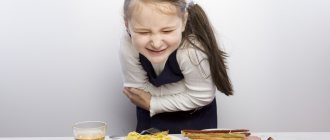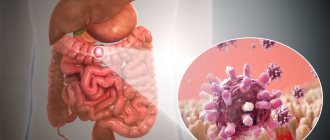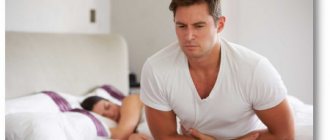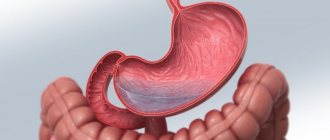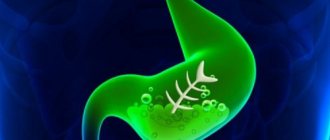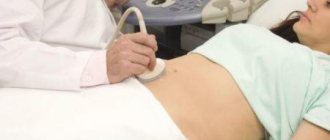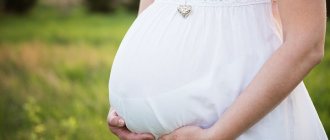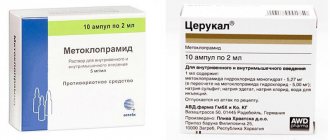Acute gastroenterocolitis (ICD 10): classification
Of course, patients are interested in additional information about this disease. So where in the international classification of diseases should we look for acute gastroenterocolitis? The ICD-10 code looks like K-52.
This group contains almost all types of gastroenteritis and colitis, including toxic, allergic, nutritional, as well as those forms of the disease whose causes could not be determined.
Infectious inflammation and its pathogens
According to the ICD, acute gastroenterocolitis is a toxic infection. Pathogens, as well as toxic products of their vital activity, can spread throughout the body both through the digestive system and along with the bloodstream.
Depending on the type of pathogen, acute gastroenterocolitis is divided into several groups.
- The most common form is considered to be the bacterial form of lesions. The inflammatory process occurs against the background of the activity of salmonella, ischerichia, E. coli, shigella and other bacteria.
- The disease can be fungal in nature - in most such cases, the causative agent is yeast-like fungi of the genus Candida.
- Reasons include the entry of viral particles into the body, including rotavirus, ECHO virus, etc.
- Protozoal gastroenterocolitis (acute) develops against the background of the penetration of protozoan single-celled organisms into the body, including amoebas, lamblia and trichomonas.
Pathogenic microorganisms can enter the human digestive system along with contaminated dairy products, canned food, unwashed vegetables and fruits. Sometimes the infection is directly transmitted from an infected animal or person to a healthy one. Also, you should not eat baked goods with a cream layer if all the storage rules have not been followed.
Causes
The disease, which initially occurs in an acute form, refers to pathologies of the large intestine, and is characterized by the development of an inflammatory process with subsequent disruption of its function. It affects both men and women with varying frequencies, but also occurs in older people.
According to statistics, the disease is widespread among the population of the European part and America. Representatives of Asian and African countries are subject to it to a much lesser extent. The causes of acute colitis are:
- penetration of bacterial, viral or fungal agents into the body;
- the formation of food poisoning;
- long-term treatment with drugs of certain groups.
In older people it is often provoked by:
- vascular atherosclerosis;
- ischemic damage to the large intestinal canal;
- development of nutritional allergies;
- poisoning by chemical components;
- the presence of autoimmune disorders.
The main causes of non-infectious forms of the disease
Acute gastroenterocolitis (ICD code K-52) is not always associated with infection of the body. There are a number of other factors that contribute to the occurrence of the disease.
- Sometimes inflammatory processes in the intestines are the result of an allergic reaction.
- Gastroenterocolitis can occur due to alcohol intoxication.
- The development of the disease can be caused by the ingestion of poisons, salts of heavy metals, alkalis, acids and other chemically aggressive substances into the body.
- Often during diagnosis it is discovered that toxic damage is associated with uncontrolled use of medications, in particular an overdose of salicylic acid derivatives and diuretin.
- There is also the so-called alimentary gastroenterocolitis. An acute inflammatory process in this case develops against the background of poor nutrition, frequent overeating, consumption of too spicy, hard or cold foods, irregular intake, and excess fiber and fat in the diet.
Types of gastroenterocolitis
Depending on the nature and characteristics of the inflammatory process, it is customary to distinguish several forms of gastroenterocolitis:
- hemorrhagic form - accompanied by the formation of small bleeding erosions on the mucous membrane;
- the catarrhal form is characterized by hyperemia and swelling of the mucous membranes along with the secretion of large amounts of exudate;
- ulcerative gastroenterocolitis (acute) is accompanied by ulcerative lesions of the walls of the digestive tract;
- the phlegmous form is characterized by a purulent lesion, and the gastric mucosa is most often affected;
- the fibrous form is considered quite rare and is accompanied by the formation of fibrinous films on the surface of the lining tissues of the digestive tract.
Symptoms of gastroenterocolitis
Gastroenterocolitis is an acute disease characterized by rapid progression. As a rule, the disease begins with the appearance of pain in the epigastric region. Then there is bloating, increased gas formation, and a distinct and frequent rumbling in the stomach. Many patients complain of severe heartburn, frequent belching and an unpleasant bitter taste in the mouth.
The disease is characterized by decreased appetite. Patients suffer from nausea and severe vomiting, and large undigested pieces of food may be present in the vomit. In the first two days, stool retention may occur, which then sharply turns into diarrhea. Blood streaks and lumps of mucus may be present in the stool.
There is a sharp increase in temperature - up to 38-39 degrees. When examining the patient, one may notice the formation of a gray coating on the tongue. A person's skin becomes paler. As the disease progresses, metabolism is disrupted and the patient quickly loses weight. The list of symptoms includes headaches, muscle weakness, and confusion. In severe cases of the disease, fainting is possible.
Symptoms of acute gastroenteritis
Non-infectious enteritis occurs for various reasons, but the development of the disease manifests itself in the same way in most cases.
Patients experience:
- nausea;
- vomit;
- diarrhea;
- bloating and gas formation in the intestines;
- pain in the upper abdomen;
- temperature increase by 1-3 degrees;
- impurities of mucus and so on appear in the stool.
Patients also experience decreased appetite, chills, weakness, and other deterioration in activity.
Acute gastroenterocolitis in children: features of the disease course
According to statistics, children are more prone to this toxic infection due to an imperfect immune system. Naturally, the clinical picture in a small patient has some peculiarities. In particular, the disease begins with fever - the temperature rises sharply to 38-40 degrees.
Vomiting is also present - the urge occurs constantly. The child complains of abdominal pain and diarrhea, and blood is often present in the stool. Due to oxidative processes in the intestines, stool may become green. A child with similar symptoms should be urgently taken to the hospital, since the child’s body is more susceptible to dehydration and the accompanying unpleasant consequences.
Worrying symptoms
The causative agent of gastroenteritis, when it comes into contact with the mucous protective layer of the walls of internal organs (stomach, small intestine), begins to irritate the nerve endings in the digestive system, thereby causing unpleasant symptoms:
- Nausea. The intensity of discomfort depends on the degree of damage to the body.
- Vomiting is strong and frequent.
- Involuntary sounds in the abdominal area.
- Diarrhea. In this case, the stool is liquid, frequent and with the presence of foam. The frequency of the urge to go to the toilet reaches twenty times.
- A large amount of gas is formed in the intestines, causing bloating.
- The patient's appetite decreases and disappears.
- Often, along with other symptoms, a pain syndrome appears, localized in the umbilical region or distributed throughout the abdomen.
Often an adult patient also complains of cold sweat, weakness throughout the body, and fever.
The clinic of inflammation is developing rapidly. A few hours are enough for the patient's condition to worsen.
Frequent bowel movements and vomiting lead to dehydration and the following symptoms:
- Dry mouth.
- The skin suffers from lack of moisture and becomes rough.
- Urination is difficult, fluid volume decreases.
- Blood pressure decreases.
- When you press on the skin, it slowly returns to its original state.
When the first signs of infection appear, you should go to the hospital for medical help. Otherwise, the disease progresses to a severe stage, when the symptoms are supplemented by dizziness, headaches and fainting. If treatment is not received, the patient dies.
In young children, exacerbation of the disease has its own characteristics and consists of a sharp increase in body temperature. The thermometer stops at 38 degrees and the indicator continues to rise. The baby's condition reaches fever. Vomiting is regular and strong. The child complains that his stomach hurts. The stool is liquid, interspersed with blood. The occurrence of oxidation processes in the intestinal tract leads to the coloring of feces in a green tint. The appearance of the first signs indicates the need for urgent hospitalization and therapy. Delay leads to severe dehydration of the baby’s body and the development of irreversible consequences.
Modern diagnostic methods
First of all, the doctor conducts an examination, finds out all the symptoms, and collects anamnesis. The clinical picture, as a rule, gives reason to suspect gastroenterocolitis. Naturally, additional research is required, including a blood test (a high number of leukocytes indicates the presence of an inflammatory process). Feces and vomit are also necessarily sent for laboratory testing - tests make it possible to determine not only the pathogen, but also its sensitivity to certain medications.
In addition, it is important to determine what exactly became the source of the infection (if infectious gastroenterocolitis is suspected). Products are also sent for laboratory analysis. This is important, because by discovering exactly how the infection is transmitted, an epidemic can be prevented.
Treatment of gastroenterocolitis
Treatment of acute inflammation is carried out exclusively in a hospital setting, namely in the infectious diseases department of the hospital. In most cases, maintenance therapy is necessary. If dangerous foods or poisons have been consumed recently, gastric lavage is performed. In addition, patients are prescribed sorbents, as well as drugs that accelerate the elimination of toxic substances from the body (including those that appear as a result of the metabolism of pathogenic microorganisms).
Since gastroenterocolitis is associated with significant loss of fluid, drinking plenty of fluids and taking Regidron is recommended - this will help restore the water-salt balance in the body. In case of excessive vomiting, patients may be prescribed Cerucal, Reglan or other antiemetics (usually administered intravenously due to constant vomiting spasms). But the use of antidiarrheal drugs is not recommended.
In the most severe cases, therapy may be supplemented with antibiotics, antiviral, antifungal or antiparasitic drugs, although most often this is not required. As a rule, an improvement in a person’s condition is observed within 3-4 days after the start of treatment.
Treatment
Depending on the etiology, the following types of colitis are distinguished:
- nutritional;
- infectious;
- pharmacological;
- ischemic;
- allergic;
- mechanical.
Taking into account the origin and based on the diagnostic results, the doctor chooses an adequate treatment strategy. As a rule, acute colitis involves treatment with a combined approach, which includes a number of accessible and effective methods: the use of medications, physiotherapeutic procedures, and nutritional correction. To achieve a quick result, it is necessary to treat the disease comprehensively.
Drug therapy
The basis in the fight against inflammatory disease is considered to be medications of various effects. They are representatives of different pharmacological groups. Treatment of acute colitis should be carried out in stages, taking into account the severity of the ongoing process.
Antimicrobials and antibiotics
If the cause of the disease is infectious agents, the patient is prescribed antibacterial, antiviral or antimycotic agents. In most cases, a short course of treatment of 3-5 days is carried out using drugs such as Enterofuril, Tsifran, Alpha Normix (Rifaximin).
Anthelmintics
If the provoking factor is a parasitic infection, the type of helminths is identified. Depending on the nature of their origin, appropriate specialized medications are prescribed. The most popular are Praziquantel, Vermox and Pyrantel. Of course, the choice of drug should be left to the doctor.
Antispasmodics
The pronounced pain syndrome that invariably accompanies acute colitis can be relieved with painkillers. For these purposes, antispasmodics are used - “No-Shpa”, “Papaverine”, “Drotaverine”. In more severe cases, they can be supplemented with anticholinergic drugs.
Locally significant drugs
Frequent complications of colitis are pathologies such as inflammation of the rectum or sigmoid colon. To eliminate the early manifestations of these diseases, specific local therapy is prescribed using:
- medicinal suppositories based on anesthesin, belladonna;
- astringents that are administered rectally;
- enemas with phytotherapeutic solutions based on chamomile and calendula.
Antidiarrheals
Stool disorders that accompany any gastrointestinal disease, including colitis, are eliminated in various ways depending on their type. Thus, astringents are used to treat diarrhea - white clay, tanalbin, bismuth salts, oak bark.
Enterosorbents
To speed up and increase the efficiency of removal from the body of decay products and toxins released as a result of the pathological process, patients are prescribed sorbents. The most commonly used for colitis are:
- activated carbon;
- "Carbolong";
- "Sorbex";
- "Enterosgel";
- "Polysorb";
- "Polyphepan".
Multienzyme preparations
If colitis is a consequence of damage to the pancreas or liver, then the following medications are mandatory:
- "Pancreatin";
- "Festal";
- "Creon";
- "Panzinorm";
- "Digestal".
Diet as part of therapy
Of course, nutrition is an important part of therapy. A properly formulated diet will help speed up the patient’s recovery process. The food should be light, but at the same time provide the body with the necessary nutrients. Porridge, vegetable and fruit soups will have a good effect on the patient’s condition.
It is imperative to exclude from the diet fried and fatty foods, spicy and smoked foods, spices, sour fruits, in short, everything that can irritate the intestinal mucosa. It is also worth strictly limiting the amount of black bread, milk, and various fruit compotes.
The best option is split meals, and you need to eat often (6-7 times a day), but in small portions - this will ensure rapid digestion of food. Since acute gastroenterocolitis is associated with dehydration, it is necessary to maintain water balance by drinking at least 2-3 liters of purified water per day.
All these measures help not only get rid of the disease, but also restore the functions of the digestive system.
Treatment methods for chronic colitis
When the pathogenesis of the disease is identified, immediate therapy is required. Timely initiation of therapy will prevent complications and improve a person’s general condition.
The procedure depends on the degree of the disease. At the initial stage, a special diet is prescribed, and exacerbation of the disease leads to the use of medications.
In case of exacerbation of the disease and in case of urgent hospitalization, the patient is prescribed medications and a strict diet. Treatment is prescribed to each patient individually depending on the type, stage of the disease and area of infection in the body. If treated incorrectly, the situation can develop into serious complications.
Drug treatment
Clinical treatment means pill therapy or surgery for complications.
Medicines for treatment:
- Sulfonamides (antibacterial and antiallergic drugs);
- Eubiotics (effective drugs with a high content of hydroxyquinoline, reduce abdominal pain, normalize stool);
- Probiotics (microorganisms necessary to restore the intestinal environment);
- Antispasmodics (to reduce pain);
- Laxatives (to combat constipation and diarrhea);
- Antibiotics;
- Sedatives (spastic colitis);
- Enzyme tablets;
- Vitamins (an effective form for healing the tissues of the intestinal mucosa);
- Multienzyme tablets (for dysbacteriosis).
The diet is compiled individually. General rules of diet for chronic colitis:
- Eat at least four times a day in small portions;
- Add fiber to your diet in the form of cereals, vegetables, fruits and bread;
- Eat meat and fish without fat and boiled;
- Eat boiled eggs for breakfast in the morning (non-infectious colitis);
- Give preference to first courses based on vegetable broths;
- Diversify your diet with seafood;
- Exclude carbonated drinks, alcoholic drinks, dairy products, hot spices.
Folk remedies for treatment
Chronic colitis can be treated at home and with folk remedies after remission.
Folk remedies against colitis:
- Sage tincture. Pour a tablespoon of dried leaves into two glasses of hot water, let it brew for thirty minutes, strain and take the decoction three times a day, half a glass before meals. Duration: two weeks.
- Plantain juice. Extract the juice from finely chopped fresh leaves. Add an equal amount of honey and keep in a water bath for twenty minutes. Store the juice in the refrigerator with the lid tightly closed. Take one teaspoon twice a day for ten days.
- Apple juice. Add one hundred grams of honey per liter of freshly squeezed juice. Take in the morning on an empty stomach for two months. Use only if colitis is non-ulcerative.
- Walnuts. Take 2 pieces as a snack once a day after lunch.
Folk remedies should be used after consulting a doctor.
